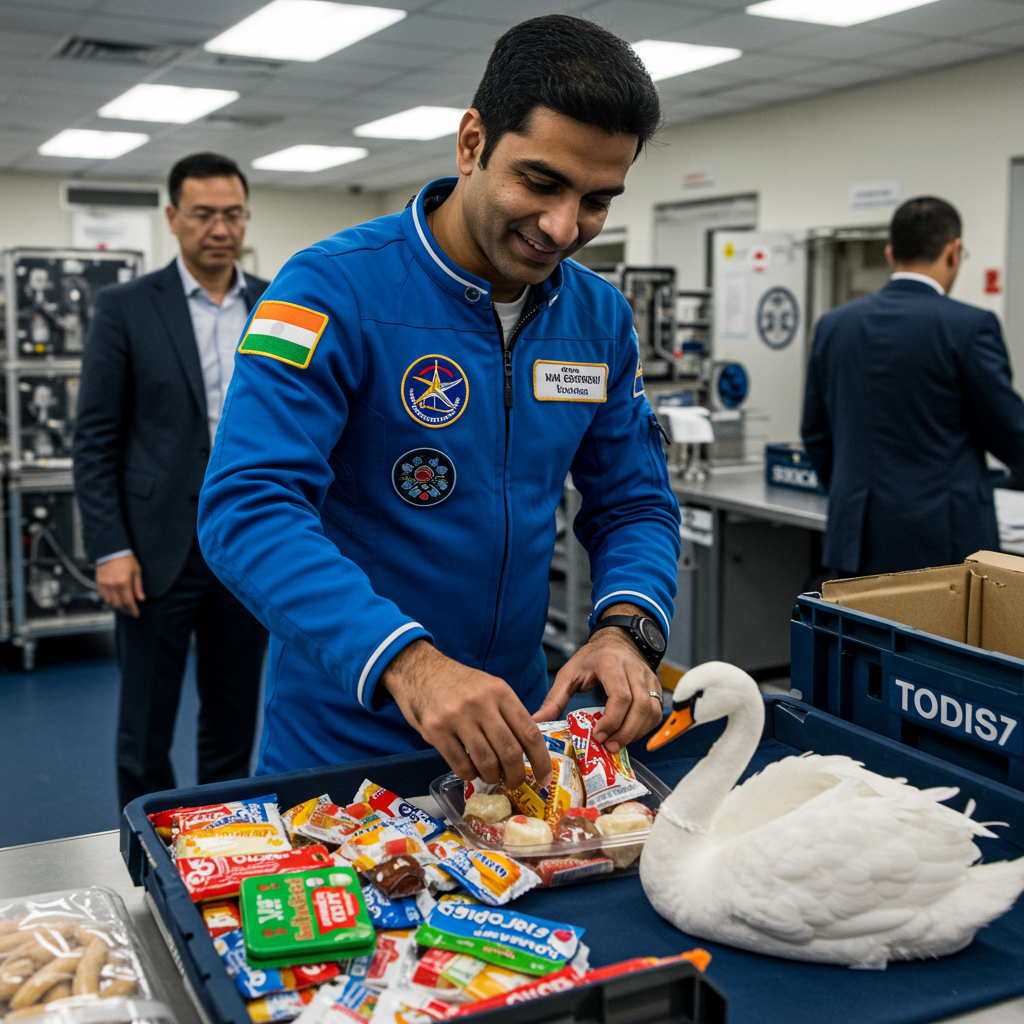Outer space is often perceived as a silent, featureless vacuum. But what if it had a smell? Scientists are discovering that the cosmos is surprisingly rich in distinct aromas, detectable not by our noses in a vacuum, but through the chemical signatures left by molecules drifting across vast interstellar distances. Analyzing these peculiar scents, from planets within our solar system to distant exoplanets, offers incredible insights into the chemical composition of the universe and provides crucial clues in the search for life beyond Earth.
Leading this fascinating exploration is Marina Barcenilla, a space scientist, fragrance designer, and astrobiology PhD student. Her unique background allows her to recreate the hypothetical odours of space for public exhibitions, helping us connect with the cosmos on a sensory level.
Planetary Pongs and Cosmic Aromas
If you could take a whiff of different celestial bodies, what would you smell? The variety is astounding:
Jupiter: Described by Barcenilla as “a bit like a stink bomb,” the gas giant’s layered clouds likely offer a noxious olfactory experience. The top layer, thought to be ammonia ice, could smell like cat urine. Deeper down, a combination of ammonia and sulphur might produce the dreaded rotten egg stench of ammonium sulphide. Even further in, organic molecules called tholins, related to gasoline, suggest notes of petroleum or even garlic.
Saturn’s Moon Titan: Atmospheric analysis suggests this large moon carries a mix of scents including sweet almonds, petrol, and rotting fish.
Hot Gas Giants: Exoplanets like HD 189733 b, a scorching hot gas giant, are associated with the strong smell of rotten eggs due to pervasive sulphurous compounds in their atmospheres.
Moving beyond individual planets, the vastness of interstellar space holds its own complex bouquets:
Interstellar Dust Clouds: Researchers speculate that these swirling clouds in the Milky Way’s spiral arms combine scents reminiscent of “crazy ice cream and knee-buckling ammonia.”
Sagittarius B2: This giant molecular cloud near the galactic center is a chemical soup containing “prebiotic molecules” vital for life, such as ethanol, methanol, acetone, hydrogen sulphide, and ethylene glycol (used as antifreeze).
Milky Way Center: While often romantically linked to the smell of raspberries, Barcenilla clarifies this connection is largely due to the presence of ethyl formate. This molecule contributes to the flavour of raspberries and other fruits but, in isolation, smells more like nail varnish or an alcoholic, rum-like scent.
The Distinct Scent of Space for Astronauts
While the vacuum of space itself is odorless, astronauts returning from spacewalks often report a strange, persistent smell clinging to their suits and tools upon re-entry into the spacecraft cabin. Helen Sharman, the UK’s first astronaut, described it as the metallic smell of welding she remembered from car workshops. Other astronauts have offered similar descriptions: charred meat, gunpowder, or burnt electrical wiring.
What Causes the Astronauts’ Space Smell?
The precise cause of this post-spacewalk smell remains a subject of scientific curiosity, but two leading theories stand out:
- Atomic Oxygen and Ozone: At the altitude of the International Space Station (ISS), the vacuum isn’t perfect. The residual atmosphere contains single oxygen atoms, known as atomic oxygen. These highly reactive atoms can cling to materials exposed to space. When astronauts return to the cabin, these atoms encounter the normal oxygen (O2) in the air. The reaction forms ozone (O3). Ozone has a distinctive metallic tang, familiar on Earth as the smell of static electricity felt just after a thunderstorm.
- Polycyclic Aromatic Hydrocarbons (PAHs): Another possibility is the presence of PAHs. These complex organic molecules are created during the death throes of stars, released into the universe where they contribute to the formation of new cosmic structures like comets and planets. On Earth, PAHs are found in fossil fuels and are produced by the incomplete combustion of organic materials – essentially, burning things. If you’ve ever burned food, you’ve created PAHs. In space, these molecules can float freely, carrying smells often described as solvent-like, moth-ball-like, burning plastic, or bitumen.
- https://www.bbc.com/future/article/20250522-what-does-outer-space-smell-like
- https://stonehartproperties.com/
How Telescopes “Smell” Distant Worlds
Humans can’t physically sniff the atmospheres of distant planets, but advanced telescopes can. Instruments like the James Webb Space Telescope (JWST) act as sophisticated chemical detectors. By observing how starlight passes through a planet’s atmosphere, scientists can analyze subtle changes in the light spectrum. Different chemicals absorb light at different wavelengths, leaving unique “fingerprints” that reveal their presence.
This technique allowed JWST to detect carbon dioxide (CO2) in the atmosphere of the exoplanet WASP-39 b, effectively getting the first “whiff” of its chemical makeup from light years away.
Sniffing for Life: The Exciting Case of K2-18b
Perhaps the most thrilling aspect of studying cosmic chemistry is its potential role in finding extraterrestrial life. Astrophysicist Subhajit Sarkar and his team used JWST data to investigate the exoplanet K2-18b, a “sub-Neptune” (larger than Earth but smaller than Neptune) about 120 light years away. K2-18b is considered a prime candidate for being a “hycean” world – a potentially habitable planet covered in an ocean.
In a groundbreaking discovery, Sarkar’s team detected the possible presence of dimethyl sulphide (DMS) and/or dimethyl disulphide (DMDS) in K2-18b’s atmosphere. On Earth, DMS is primarily produced by marine organisms like phytoplankton and is a major component of the distinctive “smell of the sea.” While abiotic sources for these chemicals can’t be completely ruled out without further study, their detection, especially in concentrations potentially 10,000 times higher than in Earth’s atmosphere, is a significant finding. It suggests the intriguing possibility of an ocean “teeming with life” on this distant world.
Connecting the Cosmos Through Scent
The journey through the peculiar smells of space reveals a surprising connection to our own sensory world. Many of the chemical compounds found out there have familiar counterparts here on Earth. Marina Barcenilla’s work in recreating scents like Mars (described as rust, dust, and damp) allows us a tangible way to imagine these alien environments.
Yet, amidst the diverse and sometimes strange smells of the cosmos, perhaps the most profound aroma belongs to our home planet. Helen Sharman vividly recalls the moment the hatch of her spacecraft opened upon landing back on Earth after months in orbit. The rush of fresh air, carrying the scent of crushed plants and damp earth, was, she says, “gorgeous, absolutely delicious.” It’s a powerful reminder that the unique, vibrant smell of Earth, full of life, remains an unparalleled treasure in the universe.




